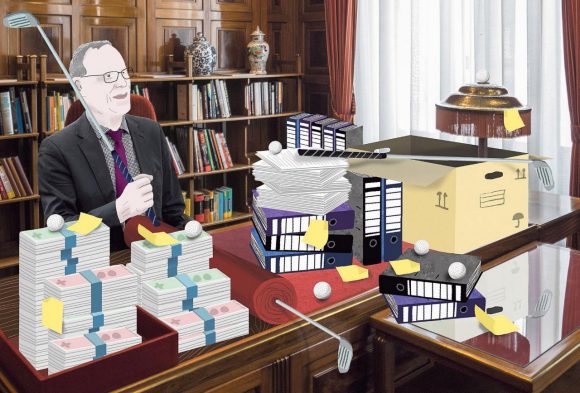
The tax burden in Switzerland may be lower than in other countries – though at times the tax man can fill his plate in this country too. When planning their retirement, savers are given a number of options to reduce their tax burden.
■ According to Martin Hubatka, attorney and president of the Verein BVG-Auskünfte, people can take most of the steps towards saving taxes before they retire. Many pension funds offer schemes with varying savings contributions. For example: the employer pays 12% of the employee’s salary into the pension fund and the employee can choose to contribute either 7%, 10% or 12%. The higher the chosen percentage, the higher the deductions and the more positive the tax impact, says Mr. Hubatka. Policy holders would then also be more inclined to make voluntary purchases into the fund.
■ Beneficiaries should always consider making purchases into the pension fund when planning for retirement, provided their financial situation allows them to do so. Such purchases can be deducted from taxable income and are thus a good way to interrupt the tax progression on income. However, Reto Spring, president of the Swiss Financial Planners Association, suggests checking how well the pension fund in question is performing before making voluntary purchases. Furthermore, such voluntary purchases are generally not advisable before the age of 50, because the tax-saving effect dilutes over the years remaining until retirement. If people have a “retirement gap” – for instance because they immigrated to Switzerland – it can make sense to make purchases when they are younger. This should, however, be planned carefully. It could be more worthwhile to spread these purchases over a period of several years, for example.
■ Mr. Spring adds that those who are voluntarily insured – such as doctors or architects – often have especially favorable opportunities to increase their pensions. They could pay themselves a high salary and use it to make purchases into their pension fund. In tax terms, this could potentially be much more attractive than having the company profits or income taxed. Companies also have options for senior employees at their disposal.
■ To allow for lump-sum withdrawals, these purchases should be made up to three years before retirement. Otherwise, the beneficiary has to pay back the tax savings. This does not only apply to monies used to close a gap that may have been generated by a divorce, for instance. It is therefore important to clarify the impact of purchases on taxes in advance.
■ Contributions to pillar 3a can also be deducted from taxable income. Those who are insured with a pension fund can contribute 6,768 Swiss francs this year. Employed persons who are not insured with a pension fund can even contribute up to 33,840 Swiss francs or a maximum of 20% of their earned income. It is also a good idea to have several pillar 3a accounts to allow for cascaded withdrawals later in order to interrupt the tax progression.
■ Property owners can also optimize their taxes. For example, the upkeep of real estate – as long as it helps maintain the value – can be deducted from taxable income.
■ Mr. Hubatka recommends that employees who lose their jobs before their retirement should not transfer their pension fund to one, but two vested benefits accounts with different financial institutions. This would allow for a staggered withdrawal of the relevant funds.
■ Policy holders have to decide at retirement whether they want to withdraw their savings in the form of a lump sum or pension. Lump-sum withdrawals are subject to a tax that is calculated independently from income and varies according to municipality. There is a progression system in some cantons, but not in all. Staggered withdrawals from the pension fund are always a good idea. According to Mr. Hubatka, a staggered retirement or a partial retirement can have particular tax benefits. Moving to a municipality with better tax rates is a thought to consider, should this be part of the retirement planning. This then means, however, that the center of one's life must really be at the new address – in many cases, this sort of move may not be realistic and is generally not viable, says Mr. Hubatka.
■ One should also be aware that withdrawals from pillar 3a or vested benefits accounts are considered to be lump-sum withdrawals from the pension fund. At retirement, savings should not be withdrawn in one fell swoop, but staggered instead.
■ The tax burden during retirement should not be underestimated, says Mr. Spring. After retirement, some deductible expenses no longer apply for income tax, including occupational expenses or pillar 3a contributions, for example. Even if one is still working part time, it is generally not possible to claim deductions at the same rate as before.
By courtesy of Neue Zürcher Zeitung. Translated by UBS Switzerland Marketing Translation Services.

